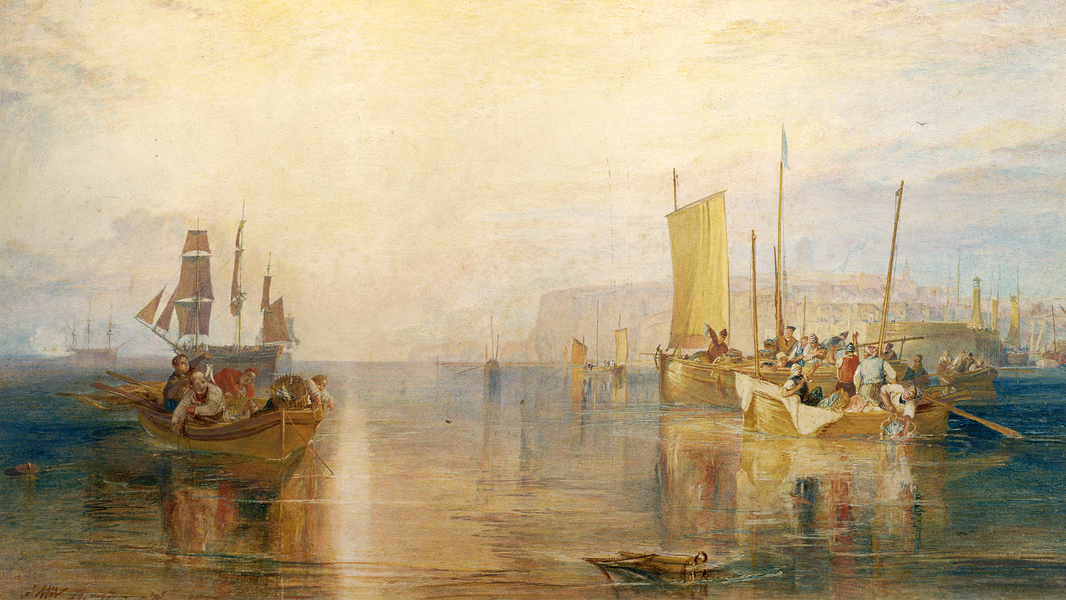Edgar Degas The Rehearsal, c.1877 Oil on canvas, 58.4 x 83.8cm (23 x 33in) Glasgow, The Burrell Collection, Glasgow Museums and Art Galleries.
Most students and lovers of art can recognise an Impressionist painting – the lively dabs of paint, the fresh colours, the 'on the spot' rather than studio setting, and the shift from grand mythological or historical narratives to everyday scenes – most notably the boulevards and cafes of Paris, or idyllic boating and picnic spots outside the city. Today, the once renegade modernist movement is beloved around the globe, summoning flocks of gallery-goers from Shanghai to Seattle and commanding top dollar at auction.
But the familiar ideas we have about Impressionism are still only a partial story, honouring certain artists and themes, to the detriment of the bigger picture – not least its female practitioners. With Art Essentials: Impressionism, we take a look at some of the lesser-known facts about Impressionism.

Mary Stevenson Cassatt Woman Sitting with a Child in her Arms, c.1890 Oil on canvas, 81 x 65.5cm (32 x 25 ¾ in) Bilbao, Museo de Bellas Artes de Bilbao.
1. Impressionism started as a boys’ club
Most of the adventurous ideas associated with the Impressionists were first discussed in the cafés of Paris. By 1866, the favourite meeting place of the budding Impressionist movement was the tiny, noisy Café Guerbois, where Manet reserved tables for informal salons.
However, this was not an all-inclusive forum. In fact, ‘respectable’ women weren’t allowed to frequent cafés or bars, effectively excluding them from key aspects of the nascent movement. Most notably, Berthe Morisot, as a member of the bourgeoisie, was unable to participate in these early group discussions. Instead, she had to rely on male friends visiting her studio in order to discuss her latest paintings and future plans.
2. It took an American to make the movement global
One of the lesser-known facts about Impressionism is that it was an American who helped make the movement global. Mary Cassatt was the first US painter to become a committed Impressionist in Paris. She was also the only American formally invited to join the French Impressionist group, exhibiting in their shows four times. Like Renoir, she painted a number of canvases of young women in sunlit rooms and lush gardens, but also produced striking still lifes.
Cassatt was based in Paris for much of her adult life and became something of an Impressionist expert for wealthy friends and collectors back home. Many important Impressionist canvases entered public and private collections in the United States thanks to her advice. Despite this, Cassatt was long under-estimated by art history, typically cast as a mere 'pupil of Degas', rather than the talented artist and key Impressionist spokesperson she was.

Mary Stevenson Cassatt Lilacs in a Window (Vase de Lilas a la Fenêtre), c.1880-83 Oil on canvas, 61.5 x 51.1cm (24 ¼ x 20 ¼ in) New York (NY), The Metropolitan Museum of Art.
3. It wasn’t just for the upper classes
A common perception – and criticism – of Impressionism is that its 'everyday' scenes were true only to a well-heeled middle class, eschewing the rougher realities of Parisian life for pretty frivolity and affluent leisure.
Though it’s true that many Impressionist artists had a certain milieu bias, both Degas and Manet depicted numerous scenes in working class bars and cafes. Degas embarked on several series documenting the working class experience, including a number of pastel drawings of sex workers, as well as a series on laundresses.
4. Monet preferred the power of the sea to the peace of his lily pond
Many of the Impressionists, and particularly Claude Monet, excelled in depicting light on water – one of the most challenging technical feats in painting. The paintings Monet produced of the waterlily pond he created at Giverny, outside Paris, mark an apogee of the Impressionist movement, and an obsession for Monet himself.
However, it was by the powerful sea, rather than serene ponds, that the artist felt most at home, declaring that ‘the sea . . . really is my element.’ In this, he was inspired by the dramatic seascapes of Courbet. In 1868, he made a trip to one of Courbet’s favourite coastal locations, Étretat in Normandy, and produced his own canvas of a stormy sea.

Claude Monet Water Lilies, 1917 Oil on canvas, 100 x 200cm (39 ¼ x 78 ¾ in) Nantes, Musée des Beaux-Arts.
5. Australians and Americans helped drive the Impressionist movement
One fact about Impressionist art that everyone thinks they know is that it’s French. However, by the 1880s, Paris was a major magnet for ambitious American and Australian artists of independent means. One of the most prominent was John Peter Russell who was born and raised in Sydney, but enrolled in art classes in Paris in 1884. In 1886, he met Monet while painting on the cliff tops of Belle-Île, off the coast of Brittany, and went on to build a large house and studio in the same region, producing many Impressionist seascapes.
Russell remained profoundly influenced by Monet for much of his career. He strove to add a clarity of composition to the Impressionist light and colour, believing that many Impressionist canvases lacked formal strength. Russell returned to Australia after the First World War. He has only been properly recognised for his contributions to the global Impressionist story in the last decades. Today, his work is displayed in all major Australian institutions, while twenty one of his paintings are with the Musee Rodin in Paris.

John Russell A Clearing in the Forest, 1891 Oil on canvas, 61 x 55.9cm (24 x 22in) Adelaide, Art Gallery of South Australia.









